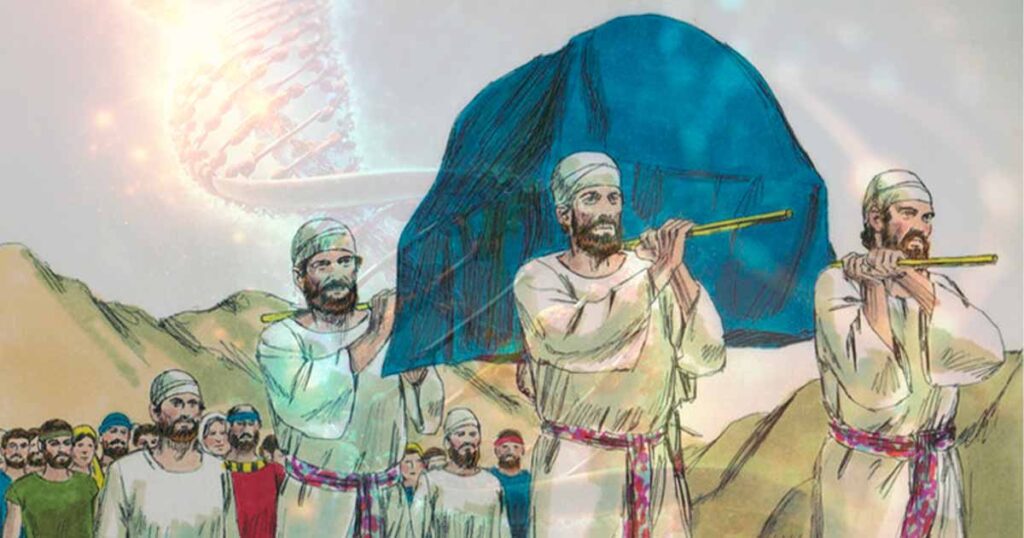
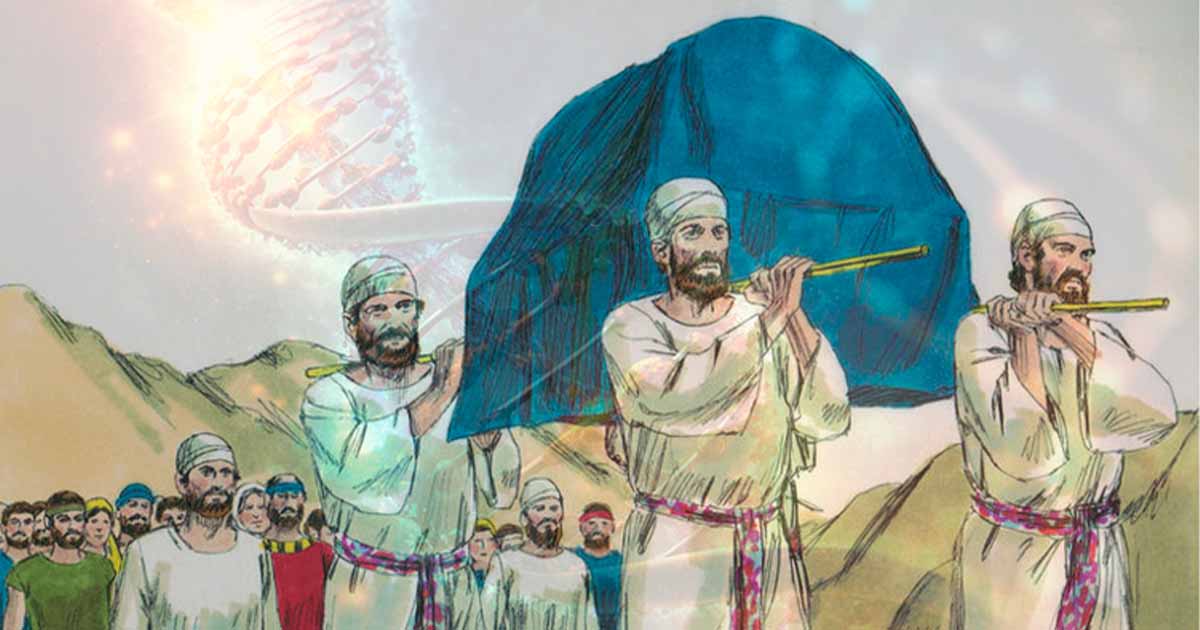
The biblical Levites were a group of people from the tribe of Levi set apart for religious service in ancient Israel. The most famous Levite was Aaron, Moses’s big brother and the first priest. The Levites played an important role in the worship and rituals of the Israelites. Their duties included serving as priests, caring for the tabernacle and later the temple, and teaching and interpreting the law. The Levites were not shy about using force to enforce their will.
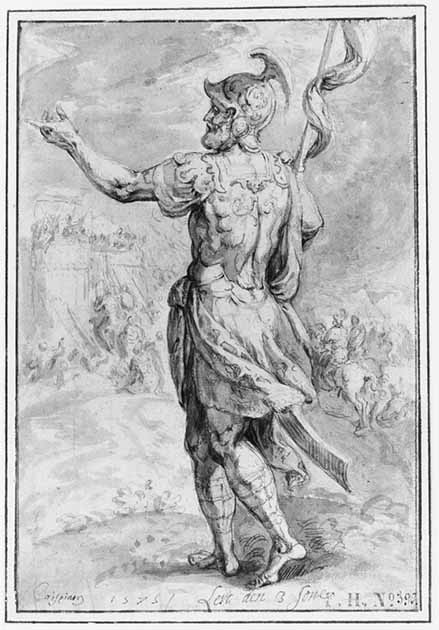
Levi Avenging the Honor of his sister Dinah. Drawing by Chrispijn van den Broeck. (Public domain)
The Levites in the History of Israel
During the time of Solomon’s temple, the temple work was divided into 24 priestly divisions, corresponding to 24 priestly lineages (whose connection with Aaron’s lineage is not fully explained). After the Babylonian exile, most of these lineages chose to remain in Babylon, and only four joined Ezra and Nehemiah. After the establishment of Herod’s temple, the duties of the four families were been divided again into 24 divisions.
Throughout the history of Israel, the Levites remained an important part of the religious life of the nation. However, their role evolved over time. By the time of Jesus, the Levitical priesthood had become corrupt and needed reform.
Jesus, for example, was critical of the religious leaders of his day, whom he saw as having lost sight of the true purpose of their role. Such criticism evolved into more complex conflicts between the public, the leadership elite and the priestly elite, which tore the people and resulted in a civil war that culminated in the destruction of Jerusalem and Herod’s temple. Records of the priests were largely discontinued following the destruction.
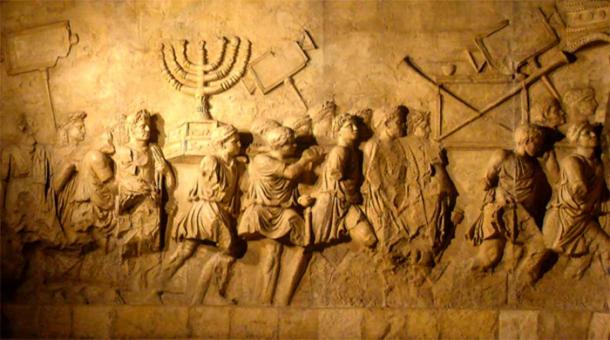
Copy of Roman Triumphal arch panel from Beth Hatefutsoth, showing the spoils taken from Jerusalem temple. (CC BY 3.0)
Curiosity Concerning the Genetic Legacy of the Levites
However, curiosity concerning the genetic legacy of the Levites did not disappear. This prompted a series of genetic studies in the late 1990s that aimed to find common genetic markers in the Y chromosome (inherited from father to son, just like surnames) between individuals that carry the surname “Levi.”
Initially, these studies reported a small number of mutations, termed the Cohen Modal Haplotype (CMH), found in a third of the people with the “Levi” surname, compared with the controls. These studies caused a major excitement in the field and with the public, envisioning that true genetic markers of the Aaron lineage survived for thousands of years along with the Levite legacy, even before surnames were invented.
Some scientists have criticized these studies for selecting mismatched controls of European descent that lacked the CMH. Those concerns were confirmed when later studies observed the CMH throughout the Middle East and Africa, confirming that the CMH was not unique to Jews and was no more than an African-Middle Eastern signature, because it was unreasonable to expect so many carriers of the truly Levite lineage.
Moreover, “Levi” is almost the most popular surname in Israel, second only to “Cohen,” a smaller priestly cast selected from the Levite group. It is unreasonable to expect them all to descend from the same ancestors, and even if some individuals carry the markers of an ancient patriarch, there is no way to know which ones are the true Levites. The choice of markers carried by one-third of the participants was random.

Ethiopian Jews. (Government Press Office, Israel / CC BY-SA 3.0)
Challenging Biblical Narratives of the Exodus
Geneticists were not the only ones asking these questions. As the field of bible criticism expanded, researchers began challenging the Exodus narrative, in which the Israelites are said to have been enslaved in Egypt and then led out of bondage by Moses. Scholars have pointed out that there is a lack of historical evidence to support the biblical account of the Exodus, including the absence of records of running slaves.
The main arguments against the biblical Exodus were the absence of any historical or archaeological evidence to support the idea that the Israelites were enslaved in Egypt. Indeed, there are no known Egyptian records of the enslavement of a large group of people, and no archaeological evidence of a sudden and large-scale departure of people from Egypt.
Many scholars have pointed out that the biblical account of the Exodus is rife with anachronisms and inconsistencies. For example, the Bible describes the Israelites wandering in the Sinai desert for 40 years, but there is no evidence of a large population living in the desert for such a long period of time.
There is also no evidence of the Israelites living in Egypt during the period in which the Exodus is supposed to have occurred and no evidence of a large-scale migration of people from Egypt to the land of Israel.
Of course, the absence of evidence is not evidence of absence, but the Exodus narrative is not supported by any evidence, and the doubts cannot be brushed away. If the Exodus did not occur, we must then ask, who were the Levites? Who invented those stories, and for what purpose?

Departure of the Israelites by David Roberts. (Public domain)
Ancient DNA and the Egyptian Origins of the Levites?
Modern bible scholars like Israel Knohl and others have put forth a theory concerning the Egyptian origin of the Levites. According to this theory, the Levites were originally an Egyptian cult that migrated to Israel and merged with the native Israelite population.
This theory is based on several lines of evidence, including historical, archaeological and linguistic data. For example, the similarity between the names of some Levitical figures, such as Moses and Aaron, and names of Egyptian origin. This suggests that the Levites may have had close cultural and religious ties with Egypt.
A cult of priests associated with the god Seth may have left Egypt at some point and later merged with the Israelite population to form the tribe of Levites. This is the most supported theory in modern research.
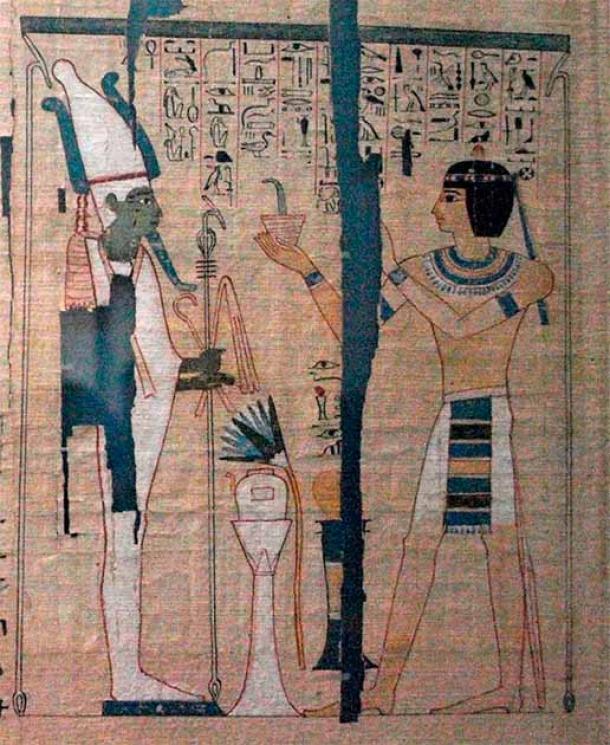
A High Priest of Amun in Thebes from his Book of the Dead. (British Museum / CC BY-SA 2.5)
With the availability of ancient DNA data, geneticists can get back and lead the research on Levites. Ancient DNA is the DNA that has been preserved in ancient human remains, such as bones or teeth. By extracting and analyzing the DNA from these ancient samples, researchers can reconstruct the genetic makeup of ancient populations and study their evolutionary history.
Considering the Egyptian origin of the Levites and the time of their origin, myself and others were able to reconstruct their ancient DNA from the available genomes in the region, producing, for the first time, a complete reconstruction of the original group of Iron Age Levites (1250 to 1170 BC). The most important advantage of this approach is that it allows anyone to compare their DNA with the ancient Levites’ DNA to test their genetic ancestry and study their priestly legacy.

The Ancient DNA Origins DNA test provides powerful DNA-based tools to help people find ancient ancestors, trace lineages and determine ancient tribal origins. (Ancient Origins DNA)
It is important to note that ancient DNA data are continuously improved both in size and quality, allowing us to continue and update the Levite reconstruction over time. The search for the origin of the Levites is one the most exciting and important endeavors in modern genetics that can deepen our understanding of ancient Jewish history and culture as well as the history of populations in the ancient world.
Top image: Ancient DNA analysis is unlocking secrets about the genetic legacy of the Levites of ancient Israel. Source: Distant Shores Media/Sweet Publishing/ CC BY-SA 3.0 overlayed and cropped onto ankreative / Adobe Stock
By Eran Elhaik